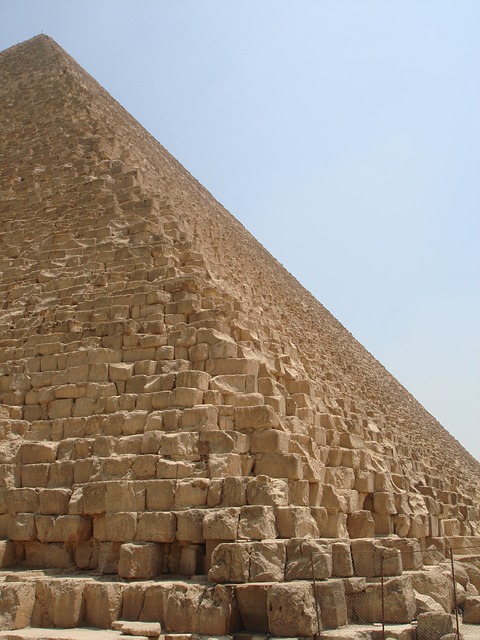I knew that the Egyptian pyramids were pretty precise in their footprint measurements, so I was surprised when I came across an article entitled, “Great Pyramid of Giza Is Slightly Lopsided“.
My previous research, and what I had told students in the past, was that the measurements of the base of at least one of the pyramids of the Giza Plateau were extremely precise. So precise, in fact, that the sides differed by fewer than two inches, even though the sides were over 700 feet long. This was an incredible feat for a civilization working around 2500 B.C. with Bronze Age tools.

The new article I came across indicated that the difference between the sides of the Great Pyramid of Khufu could actually differ by around five-and-a-half inches, rather than just two. This was based upon research conducted in the Spring of 2015 by Glen Dash and team. The team based its findings on the existing casing stones that once provided a flat veneer that covered the entire structure, as well as statistical analysis (the jagged appearance of the pyramid’s surface today is much different than how it originally appeared).
Although the article did not include information about the original report, I was able to find the published survey results about the footprint of the Great Pyramid. I must say that it’s nice to find articles that detail ongoing archaeological work performed on world-famous monuments. For as much as we have studied the pyramids of Egypt, or the Leaning Tower of Pisa, or the Great Wall of China, or some other famous landmark, it’s nice to know that these sites have more secrets yet to be revealed which can help us understand how historical civilizations lived.
Does it make a difference?
Although the footprint measurements are undoubtedly important for future scholarship, it doesn’t really matter whether it means the Great Pyramid is an exact square. The fact remains that the Egyptians of the Old Kingdom must have been highly disciplined and led by a unitary vision when creating the Pyramid of Khufu and the rest of the pyramids of the Giza Plateau.
The design of the structures is brimming with contradiction. They are simple in form, yet their logistics must have been complex; they are rationally-laid out, yet mysterious in their creation; understandable in terms of their aesthetic appeal, yet difficult to understand why a civilization would desire to create these.
It’s understandable why the pyramids could have been considered a marvel to those in the ancient world, such as Herodotus. But in a sense, they should be more of a marvel to those of us living today since we know the pace of technology. For as far as mankind has reached in the modern age, could he begin to replicate what the Egyptians did 4500 years ago?


